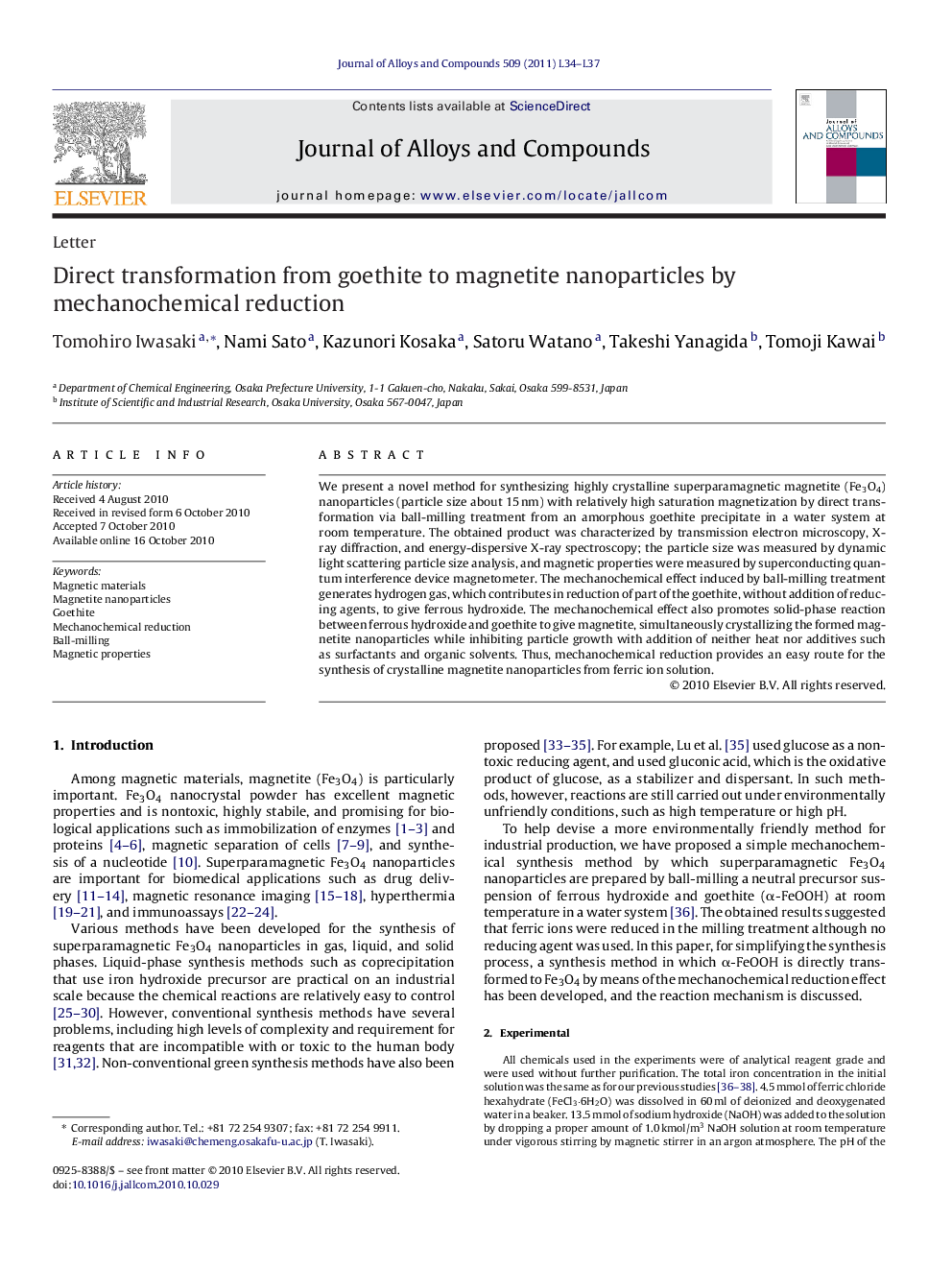| کد مقاله | کد نشریه | سال انتشار | مقاله انگلیسی | نسخه تمام متن |
|---|---|---|---|---|
| 1618634 | 1005710 | 2011 | 4 صفحه PDF | دانلود رایگان |

We present a novel method for synthesizing highly crystalline superparamagnetic magnetite (Fe3O4) nanoparticles (particle size about 15 nm) with relatively high saturation magnetization by direct transformation via ball-milling treatment from an amorphous goethite precipitate in a water system at room temperature. The obtained product was characterized by transmission electron microscopy, X-ray diffraction, and energy-dispersive X-ray spectroscopy; the particle size was measured by dynamic light scattering particle size analysis, and magnetic properties were measured by superconducting quantum interference device magnetometer. The mechanochemical effect induced by ball-milling treatment generates hydrogen gas, which contributes in reduction of part of the goethite, without addition of reducing agents, to give ferrous hydroxide. The mechanochemical effect also promotes solid-phase reaction between ferrous hydroxide and goethite to give magnetite, simultaneously crystallizing the formed magnetite nanoparticles while inhibiting particle growth with addition of neither heat nor additives such as surfactants and organic solvents. Thus, mechanochemical reduction provides an easy route for the synthesis of crystalline magnetite nanoparticles from ferric ion solution.
Research highlights▶ Highly crystalline superparamagnetic magnetite nanoparticles with relatively high saturation magnetization have been successfully synthesized from an aqueous goethite suspension at room temperature by the ball-milling treatment. ▶ The mechanochemical effect induced by the ball-milling treatment causes reduction of ferric ions and promotes the formation and crystallization of magnetite with neither additives (such as reducing ▶ agents, toxic organic solvents, or surfactants) nor heat. ▶ The mechanochemical reduction provides an easy route for the synthesis of crystalline magnetite nanoparticles from ferric ion solution and can be useful for development of environmentally friendly synthesis processes.
Journal: Journal of Alloys and Compounds - Volume 509, Issue 4, 28 January 2011, Pages L34–L37